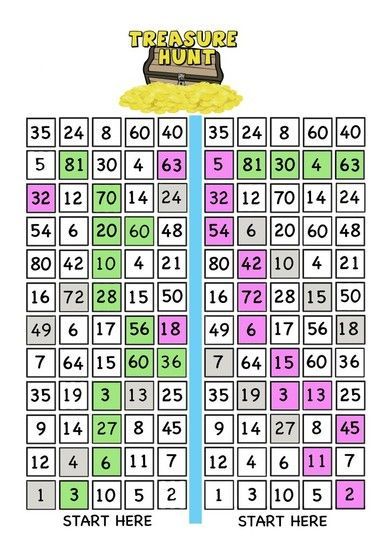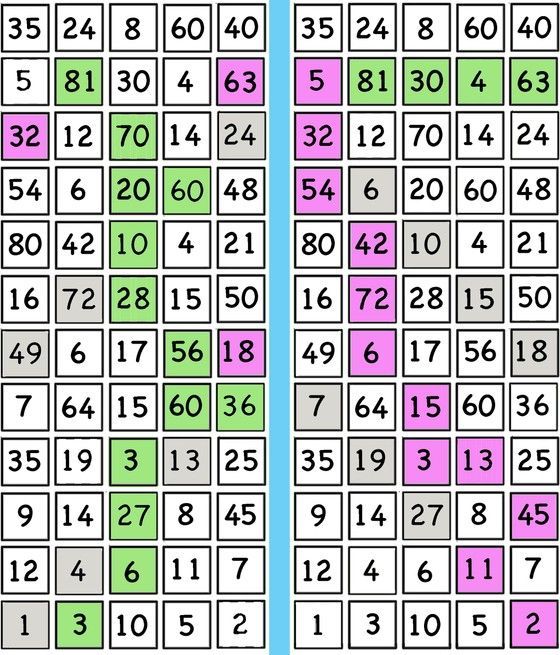Mental-math, mixed-operations, strategy
Grades 2 and up

This two-player or to teams game aims to encourage students to practice their mental math skills of addition, subtraction, multiplication, and division. The players roll two dice to make a path in order to move ahead and get to the treasure. They need to decide which operation to perform with their two numbers each time. The game offers a lot of mental math practice and requires strategic thinking.
Material:
- 2 side 10 dice, (learn how to build your own here) or a deck of playing cards with the numbers 1-10.
- Print out of the game board (provided)
- Color pencils (one for each player, different colors)
How to play:
- Each player takes one of the grids separated by the blue line. That is their map to the treasure.
- The players roll the two dice (or draw two cards) and add, subtract, multiply or divide the two numbers to get (and color) a tile on their grid. For example, if they roll 6 and 7 they can color 13,1, or 42. Division may be used when the numbers allow it. For example if you roll 6 and 3 you can color 2.
- They need to get a number on the first row to enter. On their next turns, they need to color touching tiles (side or corner) to make a path to the treasure (the path should end at the last row). They don’t need to color touching tiles every time but in the end, the path needs to be connected.
- When a player colors a grey tile they are allowed to color any other (one) tile of their choice on the opponent’s grid. (not the grey ones) This gives the player the opportunity to delay the opponent or block them by creating a wall (color a full row on their grid) and win.
- The opponent cannot use those tiles for their path or color over them. If a player cannot find a number on the grid based on their roll they must wait for their next turn.
In the example below, the green player tried to build a wall to block the purple opponent.

Here is the game board to print. You can laminate the board and use a white board marker to save paper.
Find the free google slides version below.











